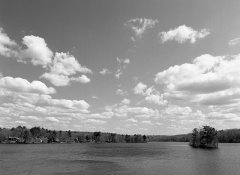DF
Member
- Joined
- Nov 10, 2012
- Messages
- 577
I've allways used a combination Red+Polarizer to darken skies in my B & W shots, but now I wonder if all along, all I've had to do is simply burn-in the sky portion during printing, that is, leave the filters off during shooting (and perhaps render a sharper image?) 'Course I want the clouds to stand out - remain white. Any experience out there ?












